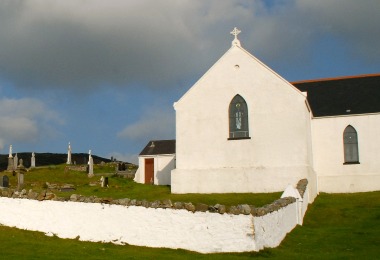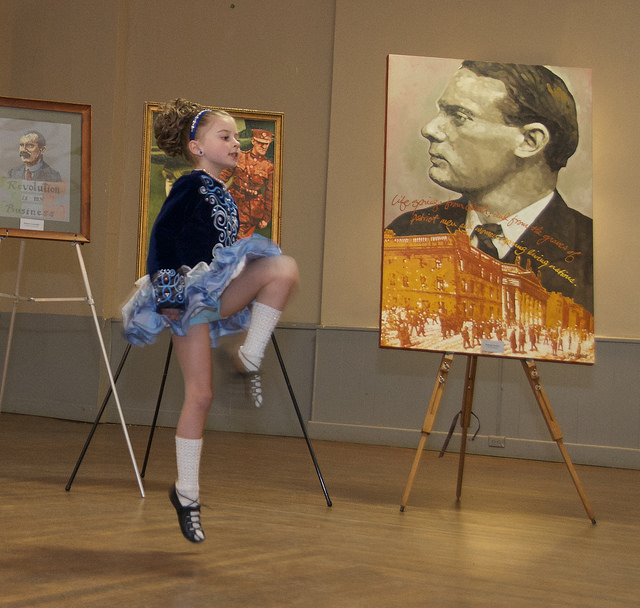By Tom Finnigan
The trees run out on the Lagg Road beyond Goorey. Near the Presbyterian Meeting House, a clump of palms rage against Atlantic breezes. Beyond them a few ragged roses in pink or white struggle to raise their heads above bracken. Half a dozen white-faced cattle stare at a middle-aged man on a bicycle until he passes the Meeting House and merges into a mist-filled landscape of water, sand and rock.
The Lagg Road is almost new. When Maghtochair passed this way in the 1860s he wrote lyrically:
“No dwelling is here; and the tourist, as he passes through it, with towering hills and precipices on one side, and the waters of Strabreagy, the sand-knolls and far extended beach on the other, feels himself quite alone with nature in all her solitary loveliness and bewitching grandeur…”
He wouldn’t have seen Norville Davies’ cattle staring. And I doubt if he was on a strong black bicycle, built with English precision, sporting a silver bell that wails above the wind and sends oyster-catchers piping into the bay. However, he did add: “One edifice only stands here; it is situated at the foot of those grand old hills, in view of the ocean and within hearing of the undying boom of its waters. It is the Catholic Chapel of Lagg, the first erected in the barony, and built by Dan O’Donnell in 1784.”
When I first came to this place in 1971, I watched people walk over the hills to Mass. I was told that, before they built an oratory in Ballyliffen, folk from the Isle of Doagh used to pack boats and row to Lagg chapel. I remember cyclists too – men in serge suits with bicycle clips. Today nobody walks or rows, and only blow-ins cycle.
Vikings came to this site when a monastery stood here. You can see them in a stained-glass window inside the chapel. They approach in a boat, sails billowing, axes raised. Recalling these invaders, crows gather on Cranny Hill like a black storm. Wind thrashes Trawbreaga. The bay runs white.
My imagination senses the panic when a sail was spotted beyond Glashedy. Monks run to the dunes, arms full of silver chalices and gold pattens. The Abbot digs a hole and buries gospel manuscripts wrapped in sheep fleeces. A bell peals violently. Driven inland by terrified children, cattle low and sheep bleat. Women sob and cling to each other; their men gather stones and take up positions on the dunes. Out beyond the bar-mouth, a striped sail and a prow carved in the shape of a beast approach the shore. Above the howl of wind, you hear the beat of a drum. The sun catches a glint of steel in axes. Terrified boys smell fear and shiver; soon they will taste blood.
I had forgotten all this until mass on Sunday, when tall Father Brendan swooped among us in green vestments and clasped our hands.
“Peace be with you!”
“And also with you!”


